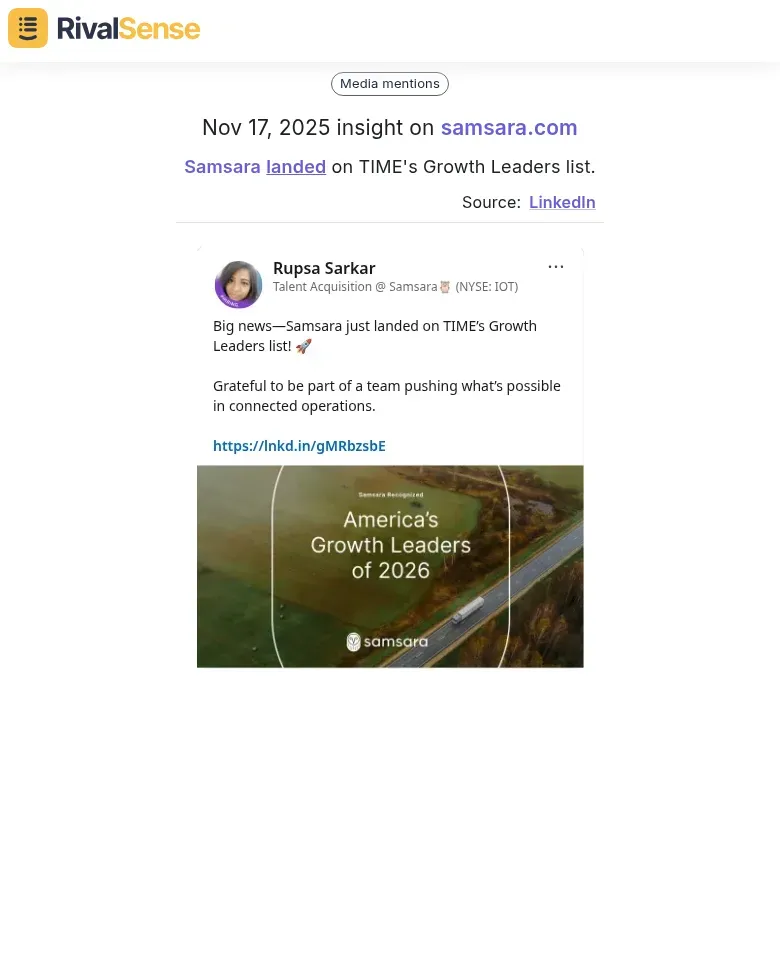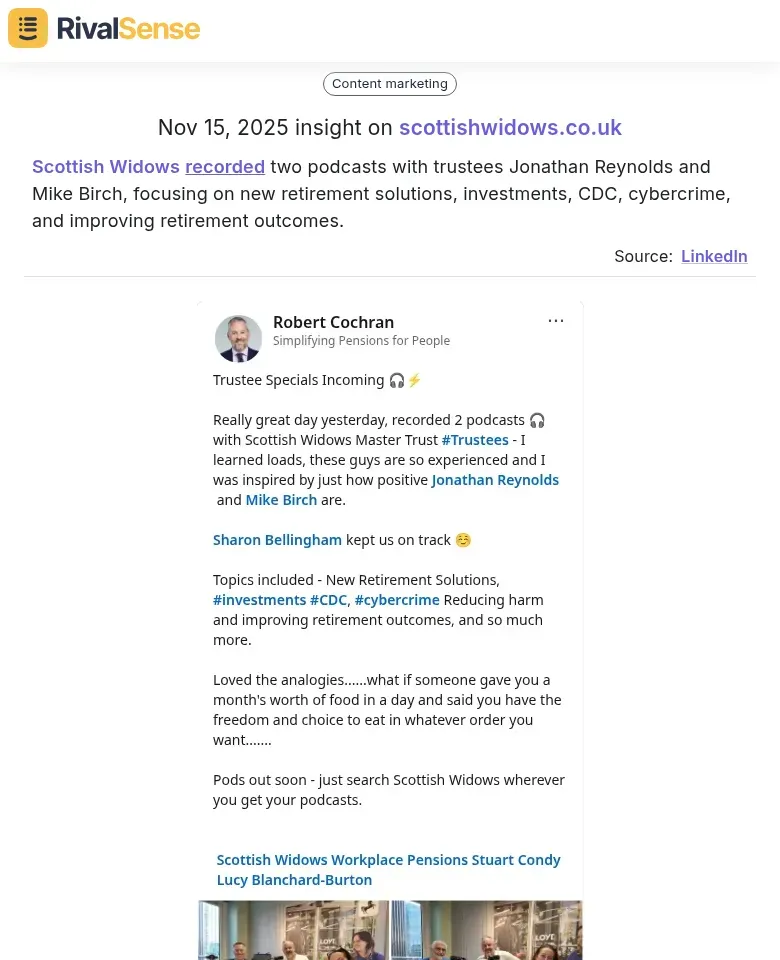Leverage Media Mentions for Competitive Content Strategy Wins
Media mentions are more than just press coverage—they're powerful third-party validations that establish brand authority and market position. When respected publications feature your competitors, they're essentially endorsing their expertise and market relevance. This creates a trust signal that resonates deeply with potential customers who value independent verification over self-promotion.
Use competitor media coverage as your strategic benchmark. Track where they're being featured, what topics they're discussing, and which journalists are covering them. This intelligence reveals gaps in your own content strategy and identifies opportunities to position your brand as an industry leader.
Practical steps to leverage media mentions:
- 📊 Create a media monitoring dashboard for key competitors
- 🔍 Analyze the context and sentiment of their coverage
- 📰 Identify the publications and journalists most relevant to your industry
- ✍️ Develop content that addresses the same topics with your unique perspective
- 🤝 Build relationships with journalists who cover your competitors
Remember: Every media mention your competitor receives is market research data you can use to refine your content strategy and secure your own authoritative coverage.
Analyzing High-Impact Media Placements for Strategic Insights
High-impact media placements reveal what resonates with top-tier audiences and can shape your competitive edge. Analyze competitor features in outlets like Forbes, TechCrunch, or industry-specific publications to identify winning themes: innovation milestones, unique data insights, or leadership expertise. These outlets prioritize narratives that educate, entertain, or solve pressing problems for their readers.
Align your brand story by mapping your strengths to media priorities. For example, if a competitor gained coverage for sustainability initiatives, highlight your eco-friendly innovations with compelling data. Tracking such placements helps you understand market trends and adapt your messaging to stand out.
Example from RivalSense: Samsara landed on TIME's Growth Leaders list. Monitoring high-profile media mentions like this is valuable because it highlights what achievements or growth metrics are gaining recognition, allowing you to benchmark your own progress and target similar accolades.

Extract actionable insights by dissecting competitor placements:
- What key messages earned coverage?
- How did they frame their value proposition?
- What audience pain points did they address?
Checklist for your strategy:
- ✅ Monitor top-tier outlets for competitor features weekly.
- ✅ Identify recurring themes (e.g., AI ethics, remote work trends).
- ✅ Adapt successful narratives to your brand, ensuring authenticity.
- ✅ Pitch stories that blend media interests with your unique angles, like case studies or original research.
This approach turns media analysis into a roadmap for earning your own prestigious placements.
Leveraging Podcasts and Audio Content for Thought Leadership
Podcasts offer a dynamic platform to establish thought leadership by discussing emerging industry trends and engaging directly with audiences. Record episodes analyzing market shifts, new technologies, or regulatory changes, positioning your brand as an authoritative voice. For example, a SaaS company could host a series on AI integration challenges, providing actionable insights that competitors overlook.
Engage strategically with industry influencers and stakeholders to amplify your reach. Invite respected podcast hosts for interviews, or appear as a guest on established shows to tap into their loyal audiences and build credibility through authentic conversations.
Example from RivalSense: Scottish Widows recorded two podcasts with trustees Jonathan Reynolds and Mike Birch, focusing on new retirement solutions, investments, CDC, cybercrime, and improving retirement outcomes. Insights into podcast activities are valuable as they reveal how competitors use audio content to address niche topics and build trust, helping you identify partnership or content gaps in your strategy.

Checklist for podcast engagement:
- 🎧 Identify top 5 industry podcasts and their audience demographics
- 💬 Prepare talking points that align with their content themes
- 🔄 Follow up with value-added resources for listeners
- 📈 Use real-world case studies and step-by-step frameworks
Address pressing industry issues head-on to build trust. Discuss common pain points your audience faces, offering practical solutions that demonstrate deep expertise and foster authentic connections.
Gaining Credibility Through Certifications and Industry Validations
Certifications and third-party validations are powerful credibility builders that differentiate your offerings in crowded markets and reassure potential clients. Research shows that 82% of B2B buyers prioritize vendor certifications when making purchasing decisions, as these endorsements serve as objective proof points that your product meets industry standards and performs as claimed.
Incorporate certifications into your marketing to highlight compliance, security, or quality assurances that competitors may lack. This not only builds trust but also positions your brand as a reliable choice in competitive landscapes.
Example from RivalSense: ViewSonic's myViewBoard 3.0 received ESSA Tier 4 – Research-Based Design certification from Digital Promise. Tracking certifications like this is valuable because it shows how competitors use validations to enhance product credibility, enabling you to pursue similar endorsements or highlight your own in sales and marketing efforts.

Practical steps to leverage certifications:
- 🏆 Identify relevant industry certifications (e.g., ISO, SOC 2) and research-based validations
- 🌐 Display certification badges prominently on your website, product pages, and marketing materials
- 📝 Incorporate validation language into sales collateral and customer conversations
- 📊 Create case studies highlighting how certifications solved specific customer pain points
- ⚖️ Use certifications in competitive comparisons to demonstrate superior compliance or security
Example: A cybersecurity company could leverage its SOC 2 certification to win deals against uncertified competitors by emphasizing data protection assurances in content campaigns.
Integrating Media Insights into Your Content Strategy
Developing a systematic approach to competitor media monitoring starts with tracking key publications, social mentions, and press releases to uncover strategic opportunities. Use tools like RivalSense to automate this process, creating alerts for competitor names and industry keywords that save time and provide real-time insights.
Analyze mentions for sentiment, frequency, and key themes to identify gaps where your competitors are underperforming or missing chances to engage their audience. This data-driven method ensures your content is timely, relevant, and differentiated.
Practical steps:
- 🔔 Set up automated monitoring for 3-5 top competitors
- 📈 Categorize mentions by theme, sentiment, and publication tier
- 💡 Identify 2-3 content opportunities monthly from analysis
- 📅 Sync your editorial calendar with media trend cycles
- 📊 Measure content performance against competitor coverage gaps
Create content that addresses these gaps. For example, if competitors receive negative press about customer service, publish case studies highlighting your superior support. If they dominate a particular topic, find adjacent angles they've overlooked to capture audience interest.
Conclusion: Turning Media Intelligence into Competitive Wins
Media mentions offer powerful competitive intelligence when strategically leveraged to refine your content and positioning. By analyzing competitor coverage patterns, you can identify market gaps, anticipate industry shifts, and establish your brand as a thought leader in underserved areas.
Key strategies to implement:
- 🎯 Track competitor media mentions to understand their positioning
- 🔎 Identify underserved topics they're missing
- ✍️ Create content that fills those gaps with your unique expertise
Practical steps for ongoing success:
- 🔄 Set up automated monitoring for competitor mentions
- 📊 Analyze sentiment and key themes in their coverage
- 💡 Identify opportunities where your expertise can provide better insights
- 🚀 Create content that directly addresses these gaps
Continuous monitoring is crucial—media landscapes evolve rapidly, requiring regular adaptation of your content strategy. Proactively use these insights to drive long-term growth by positioning your brand as the go-to authority.
Ready to transform your competitive strategy? Try RivalSense for free at https://rivalsense.co/ and get your first competitor report today to start leveraging these insights immediately!
📚 Read more
👉 Leveraging Competitor Insights for Strategic Advantage
👉 Competitor Product Update Analysis: Your Practical Guide to Staying Ahead
👉 Mastering Real-Time Competitor Alerts in Cloud Infrastructure
👉 How RivalSense Enabled Competitors to Counter Folksam's Market Moves
👉 Instagram Competitor SWOT Analysis: Uncover Strategic Insights
